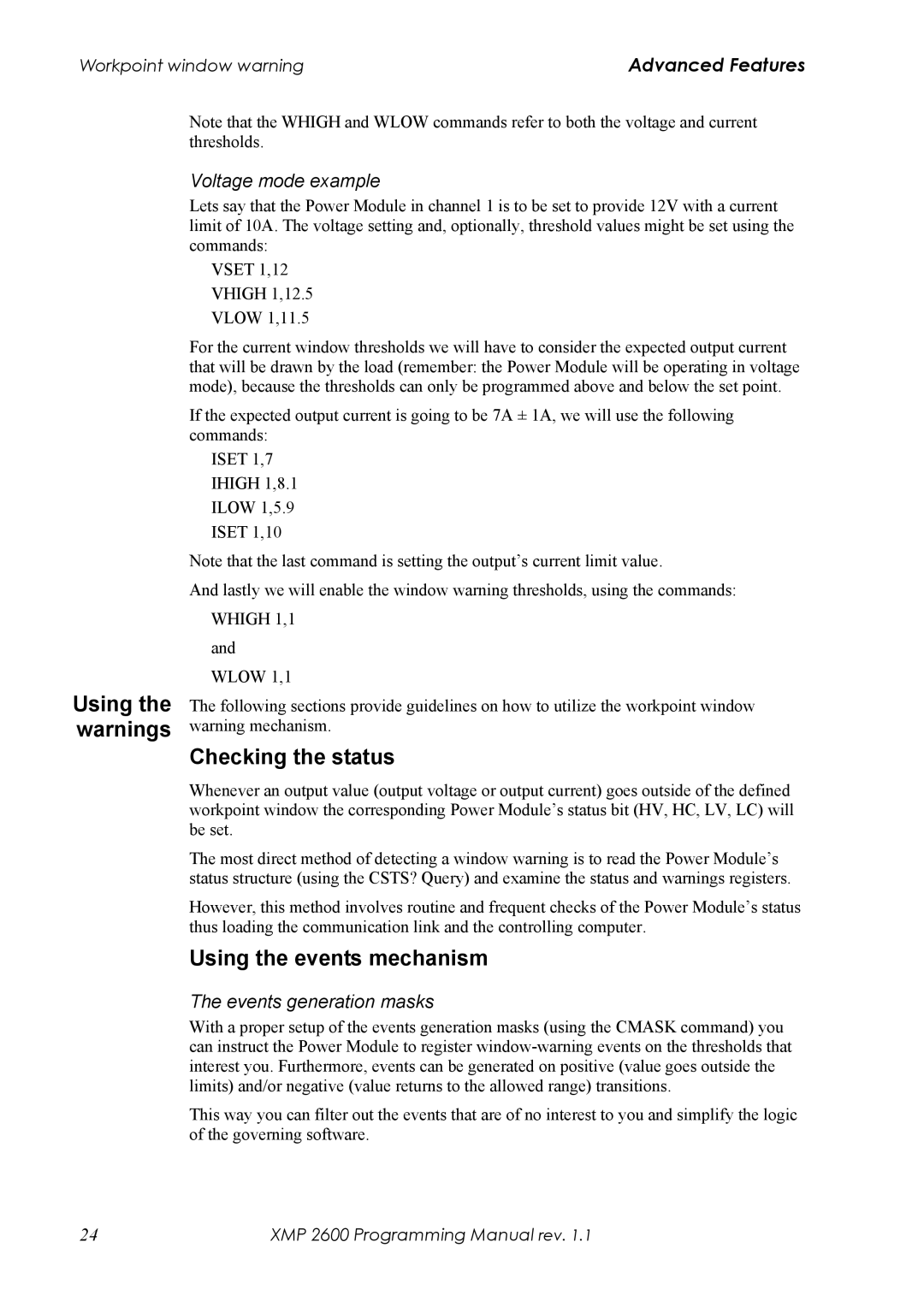Workpoint window warning | Advanced Features |
Using the warnings
Note that the WHIGH and WLOW commands refer to both the voltage and current thresholds.
Voltage mode example
Lets say that the Power Module in channel 1 is to be set to provide 12V with a current limit of 10A. The voltage setting and, optionally, threshold values might be set using the commands:
VSET 1,12 VHIGH 1,12.5 VLOW 1,11.5
For the current window thresholds we will have to consider the expected output current that will be drawn by the load (remember: the Power Module will be operating in voltage mode), because the thresholds can only be programmed above and below the set point.
If the expected output current is going to be 7A ± 1A, we will use the following commands:
ISET 1,7 IHIGH 1,8.1 ILOW 1,5.9 ISET 1,10
Note that the last command is setting the output’s current limit value.
And lastly we will enable the window warning thresholds, using the commands: WHIGH 1,1
and WLOW 1,1
The following sections provide guidelines on how to utilize the workpoint window warning mechanism.
Checking the status
Whenever an output value (output voltage or output current) goes outside of the defined workpoint window the corresponding Power Module’s status bit (HV, HC, LV, LC) will be set.
The most direct method of detecting a window warning is to read the Power Module’s status structure (using the CSTS? Query) and examine the status and warnings registers.
However, this method involves routine and frequent checks of the Power Module’s status thus loading the communication link and the controlling computer.
Using the events mechanism
The events generation masks
With a proper setup of the events generation masks (using the CMASK command) you can instruct the Power Module to register
This way you can filter out the events that are of no interest to you and simplify the logic of the governing software.
24 | XMP 2600 Programming Manual rev. 1.1 |
